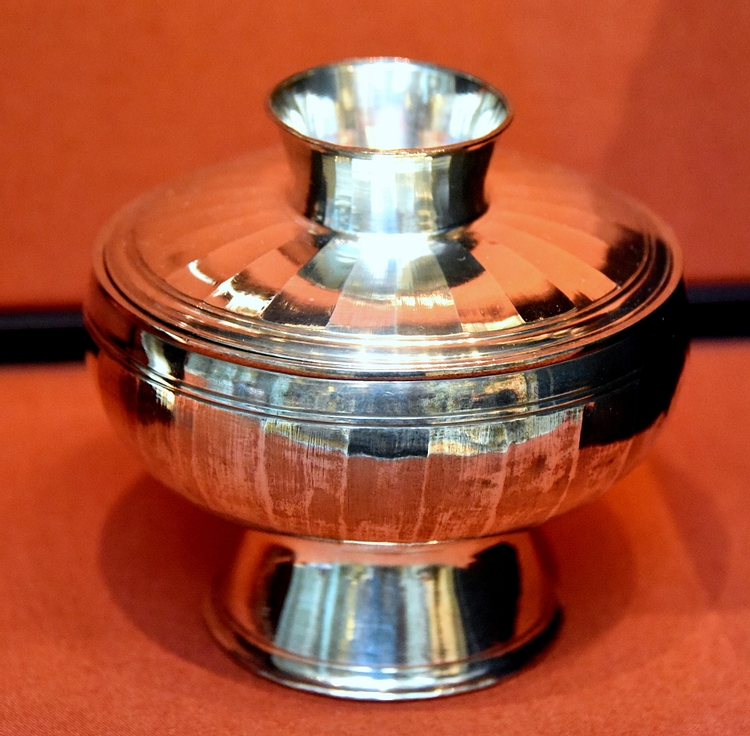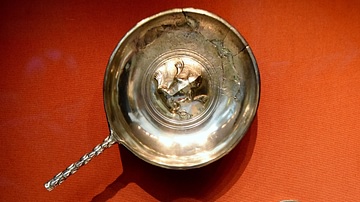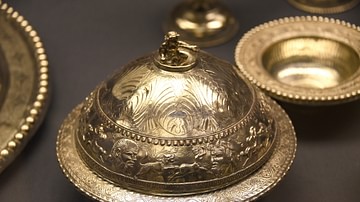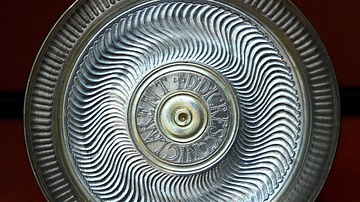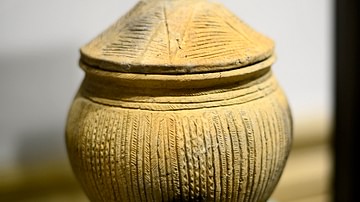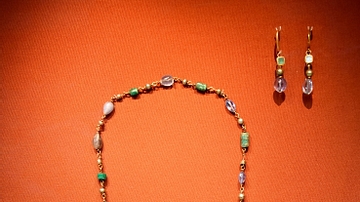Illustration
This lidded bowl is the the only surviving complete example of its kind. The handle on the top doubled as the foot ring, enabling the lid to be turned upside-down and used as a dish for serving food. The outer surface is ornamented with broad vertical hammered facets. 300s-400s CE. From the Hill of St. Louis, Tunisia. The Carthage Treasure comprises 31 pieces of jewellery and silver tableware, dating from around 400 CE. The treasure was found in Carthage, modern-day Tunisia. It is thought to have been buried for safekeeping by the prominent Cresconii family at a time of crisis, possibly when the city was attacked by the Germanic Vandal King Gaiseric in 439 CE. Bequeathed by Sir Augustus Wollaston Franks. (The British Museum, London).
About the Author
Cite This Work
APA Style
Amin, O. S. M. (2016, September 29). Silver Lidded Bowl from the Carthage Treasure. World History Encyclopedia. Retrieved from https://www.worldhistory.org/image/5755/silver-lidded-bowl-from-the-carthage-treasure/
Chicago Style
Amin, Osama Shukir Muhammed. "Silver Lidded Bowl from the Carthage Treasure." World History Encyclopedia. Last modified September 29, 2016. https://www.worldhistory.org/image/5755/silver-lidded-bowl-from-the-carthage-treasure/.
MLA Style
Amin, Osama Shukir Muhammed. "Silver Lidded Bowl from the Carthage Treasure." World History Encyclopedia. World History Encyclopedia, 29 Sep 2016, https://www.worldhistory.org/image/5755/silver-lidded-bowl-from-the-carthage-treasure/. Web. 17 Jul 2025.

